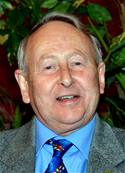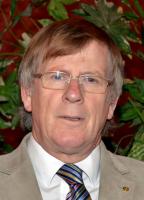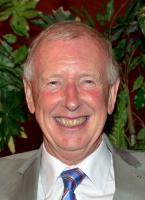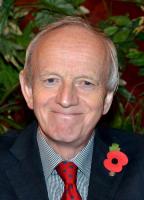Speaker Dr Will Watson - Corona Virus
Wed, Jun 3rd 2020 at 3:00 pm - 4:30 pm
John Watson's son Will gave us a very interesting talk on the Covid 19 pandemic.
The meeting was held by Zoom video call with Will joining us from his base near Addenbrooks hospital in Cambridgeshire.
Firstly, he showed us what the Coronavirus looked like. Pierre had asked whether it really was a virus as he had read that it was now thought to be a bacterial infection. Will said no it was definitely a virus but a lot of the really ill patients were then contracting bacterial infections which was adding to their problems.
He then took us through the mechanism by which the virus attacks the body. He then followed this on with a discussion on how it spreads and the importance of getting the R Number below 1 to stop the spread of the virus.
There were various questions from Tony Gill: -
1. How likely is it that a vaccine will be developed? – A lot of work is ongoing so it is quite likely that a vaccine will be ready by winter but this cannot be guaranteed and if the current methods being tried do not work there are always other avenues to research.
2. Forgetting the economic consequences how long do you think the lockdown needs to stay in place? – A difficult question to answer but we need to keep the R value low.
3. How dangerous is it to visit a supermarket and why? – The virus spreads by droplets of moisture in the breath. Outside these droplets fall out of suspension because of airflow and temperature more quickly than inside. This is why getting people to wear something that covers their nose and mouth is important (mask or a scarf). It does not stop them catching the virus, but it reduces the amount of virus they breath into the atmosphere if they are infected.
Will then discussed how the disease affects the lungs and showed a picture of the congestion caused in them.
David Burrows asked whether it affected other organs. Will said that there were both direct and indirect effect on other organs. For example, in some people it caused an inflammation of the heart. It could also cause an increased tendency for the blood to clot causing indirect effects on the heart and brain.
David also asked whether we had had Covid 18, 17 & etc. He was told that the name Covid 19 was chosen because this virus started in 2019. It is a type of SARS (severe acute respiratory syndrome) corona virus. This is basically the same type of virus that causes the common cold but there had only been one other in 2002 (SARS2) that had caused such severe acute symptoms.
Will then showed pictures of the different treatments given to patients who needed hospitalised intensive care in the order that they were attempted: -
1. Oxygen treatment using a CPAP machine (continuous positive airway pressure)
2. Oxygen treatment using intubation
3. Extracorporeal membrane oxygenation where the blood is oxygenated outside the body because the lungs have become too congested to do this.
He went on to say that the death rate of people who have had to be treated in intensive care was around 35%.
Currently was the only drug so far to have shown some help in treating patients Remdesivir. He explained that at first it was thought that Hydroxychloroquine (an anti-malaria and a rheumatoid arthritis drug) might help but later evidence is suggesting it actually hinders as it supresses the immune system.
He finished off his extremely interesting and helpful talk with some comparisons of UK health services against other countries. UK spending on healthcare compared to other countries is lower per 1,000 head of the population ($3,825 versus a study average of $5,700). Also, Staff and facility numbers compared to other countries is lower (Doctors 2.8 v 3.5, Nurses 7.8 v 11.4 Beds 2.5 v 4). However, the outcome for patients compared to other countries was favourable for routine matters in that patients had longer appointments with their doctor, received more immunisations and cancer screenings. However, the outcomes for emergency care such as strokes and heart attacks were worse but it wasn’t known whether this was related to finances or whether it was more tied into the health of the nation (e.g. obesity and lack of exercise).
 Contact John Watson about this page:
Contact John Watson about this page:
'What We Do' Main Pages:

Coming under Community this part of the group exists to undertake environmental projects on behalf of the club.
more
This committee provides the link with Rotary Internationals main charitable trust which primarily deals with projects having a global nature.
more
Rotary is not just about doing good deeds but also about enjoying yourself and this committee organises social activities. This page contains an archive of some of our activities.
moreThis committee works with the other committees to help them raise funds for their individual projects to support charities locally, nationally and internationally.
moreThis is the vehicle that donates the money that we have raised to the various good causes that we support. Its official name is The Rotary Club Of Bradford Blaize Trust Fund and its registered number with the Charity Commission is 514621.
moreThis committee organises social events and deals with the day to day running of the club.
moreThis committee exists to provide PR and communications between the members and also to provide links to non members through the web site and Facebook.
more




